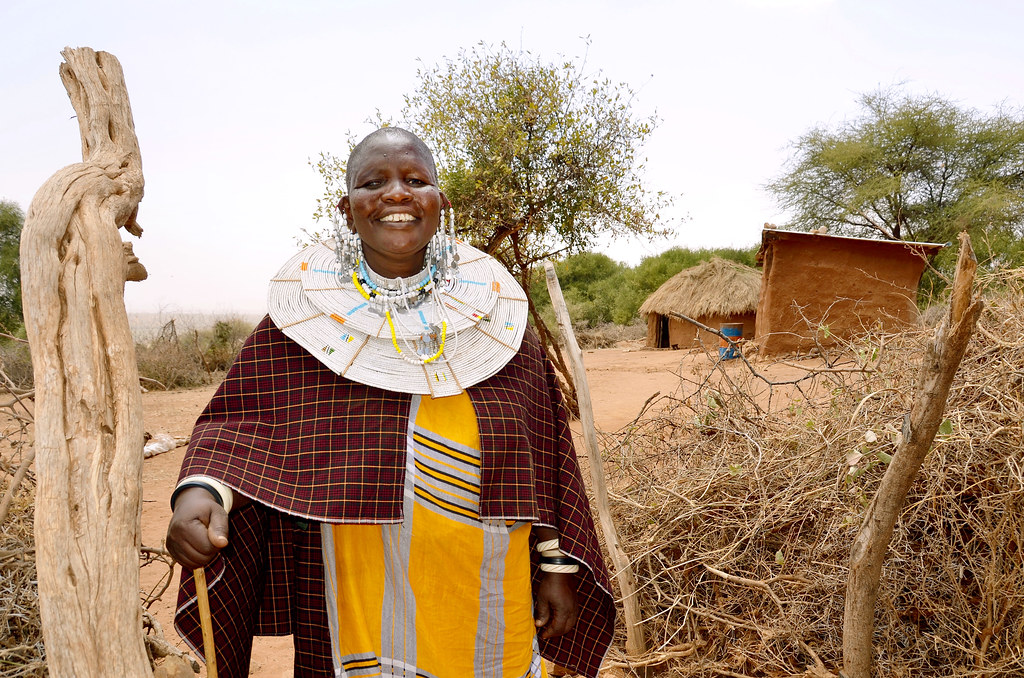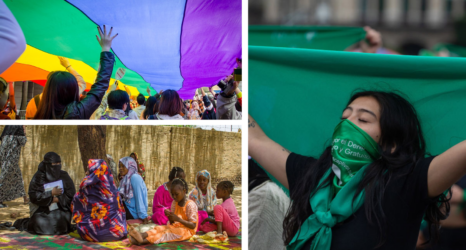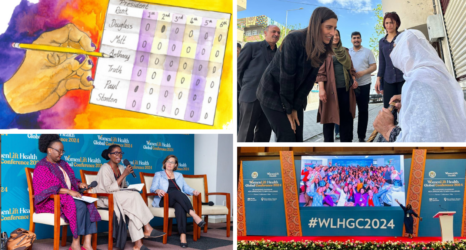Climate change is sexist. The response doesn’t have to be.

Understanding the nexus between gender, climate and conflict is crucial for developing successful policies to combat climate change and resolve conflicts, and women must meaningfully participate in shaping these strategies. A COP26 side event, “Sustainability, Equality, Peace: Integrating the Climate Change and Women, Peace and Security Agendas,” co-sponsored by Georgetown University’s Institute for Women, Peace and Security, explored how best to advance gender-responsive policies, investments and interventions to mitigate climate change and resolve conflicts.
Climate change is a threat multiplier, and women face particular and disproportionate challenges from extreme weather variations which force migration, destroy livelihoods and break down social and family structures. Ultimately, climate crises and dwindling resources lead to conflict and contribute to the rise of extremism within these fragile contexts.
COP 26, the UN climate change conference, convened in Scotland from October 31 to November 12, 2021, and presented a crucial opportunity to understand these connections and chart a path towards climate solutions that reflect the mandates of the Women, Peace and Security Agenda at the UN Security Council (WPS Agenda), according to Melanne Verveer, executive director of the Institute for Women, Peace and Security and former U.S. ambassador for global women’s issues. The WPS Agenda, initiated by UN Security Council Resolution (UNSCR) 1325 in 2000, is a policy framework requiring both a gender perspective and women’s equal and meaningful participation in peace processes and peacebuilding.
The disproportionate impact of climate change on women is linked to gender inequality and patriarchy, as male power holders unequally assign resources and responsibilities, handicapping women’s ability to recover from climate impacts, according to Gertrude Kenyangi of Uganda’s Support for Women in Agriculture and Environment, a co-convener of the event.
In Uganda, reduced economic opportunities and loss of natural resources from climate change in rural areas spurs men to migrate to urban centers, leaving women behind. Yet women do not have the structural power to manage climate effects—for example, women own only 7 percent of land titles—and suffer increased vulnerabilities and insecurities such as physical violence when accessing natural resources. Men returning to impacted areas experience “collapsed masculinity” as the head of a struggling family unit, which leads to family violence and societal conflict.
Kenyangi said increasing women’s capacity to respond to these complex family, community and societal problems will require eliminating structural patriarchal power imbalances and educating and training local women regarding sustainable agriculture—for example, regarding animal husbandry, recycling nutrients, and the connection between community-level actions, such as deforestation, and negative climate impacts.
Energy poverty—the lack of clean and renewable energy—at the local level is another significant issue, according to Nafisah Abubakr of Nigeria’s Rural Women Energy Security, a co-convener of the event. The traditional use of firewood has negative climate effects and also puts women at risk of physical harm as they are responsible for firewood collection in unpopulated areas.
Abubakr’s organization provides renewable energy sources to associations of local women called “energy entrepreneurs,” and teaches them how and why to use it. Without this education regarding the connection between fossil fuels and climate change, local women will revert to traditional energy sources which often hold cultural significance.
She also emphasized supply-side policies, as manufacturers should learn from local women to ensure products meet their needs and should transfer technology to ensure that locals are invested in renewable energy products.

Women and the gender-diverse, who are on the front lines of climate degradation, are often marginalized in the development of climate change policies, and climate responses can reflect gender bias. U.S. Assistant Secretary of State for Oceans and International Environmental and Scientific Affairs Monica Medina suggested that often women are not consulted adequately on adaptation and mitigation strategies and thus policies don’t reflect the needs of women, including menstruating women and new mothers.
The United States is committed to ensuring gender is taken into account in all U.S. policies, including climate change, national security and foreign policy, as evidenced by President Biden’s executive order establishing the first Gender Policy Council. She highlighted that while climate change is sexist, the response doesn’t have to be.
When the gender, climate and conflict nexus was first raised in 2015, many observers had difficulty accepting the linkage—but skepticism is waning, according to Ambassador Lana Nusseibeh, the permanent representative to the United Nations of the United Arab Emirates, a co-convener of the event. While the ways in which climate change threatens peace and security are better understood, women are still marginalized in peace and climate change efforts.
Nusseibeh urged the adoption of quotas or other mechanisms to ensure women are part of peace negotiations and called for more direct testimony from women in climate-affected areas at the United Nations, including at the U.N. Security Council.
The importance of gender mainstreaming in all policy sectors was echoed by Finland’s minister of foreign and European affairs, Pekka Haavisto. Women have valuable experience with national resource management and resilience in the face of climate change’s effects, so should serve critical roles as agents of change. He also urged more research and analysis on a case-by-case basis, as climate change impacts are highly contextual.
Haavisto highlighted that coordinated international efforts to take the gender, climate and conflict nexus into account are underway. The UN Climate Security Mechanism—a joint UN initiative created in 2018 to strengthen the UN system’s capacity to analyze and address the adverse impacts of climate change on peace and security—calls for gender-inclusive climate security risk assessments and risk management strategies.
Finland and Spain have also spearheaded Commitment 2025, a declaration committing to implement the requirements of the WPS Agenda by 2025. Finland has also advocated for gender and security concerns to be integrated into the work of the Coalition of Finance Ministers for Climate Action, a group of economic policymakers from over 50 countries committed to securing a just transition towards low-carbon resilient development.
Women are also marginalized with respect to accessing financing and technology, according to Zonibel Woods, senior social development specialist at the Asian Development Bank. Asian Development Bank policies focus on building women’s resilience to adapt to climate change by educating and involving women in disaster risk management and mitigation strategies, early warning systems, and climate emergency recovery and reconstruction efforts. The Asian Development Bank recognizes the connection between climate and gender, such as by requiring that climate adaptation projects achieve a high gender mainstreaming rating before approval.
The private sector, in partnership with government and local communities, plays a crucial role in mobilizing, educating and including women, who drive over 80 percent of consumer purchasing decisions, to combat climate change, according to Ann Cairns, Mastercard’s executive vice chair. Mastercard has partnered with Doconomy on a carbon calculator that tracks cardholders’ carbon footprint by analyzing purchases to help consumers draw connections between spending and climate impacts. Carbon offsets can be made by using points for climate action, such as planting trees, rather than products.
Cairns also emphasized that manufacturers need to understand women’s purchasing power and interest in sustainability, by developing advertising campaigns for sustainable products, such as electric cars, that target women.
The panel made clear that while recognizing the connection between gender, climate and conflict is crucial, women also must be included more effectively in climate change and conflict solutions. Concerted efforts must be made to educate and listen to women on the front lines of natural resource management, provide women with more power and access to resources, such as land, financing and information, and ensure that women are a meaningful part of climate policy development and peace processes. The gender, climate and conflict nexus is complex and multi-faceted, which means that climate solutions and peacebuilding strategies must be also.
Up next:





